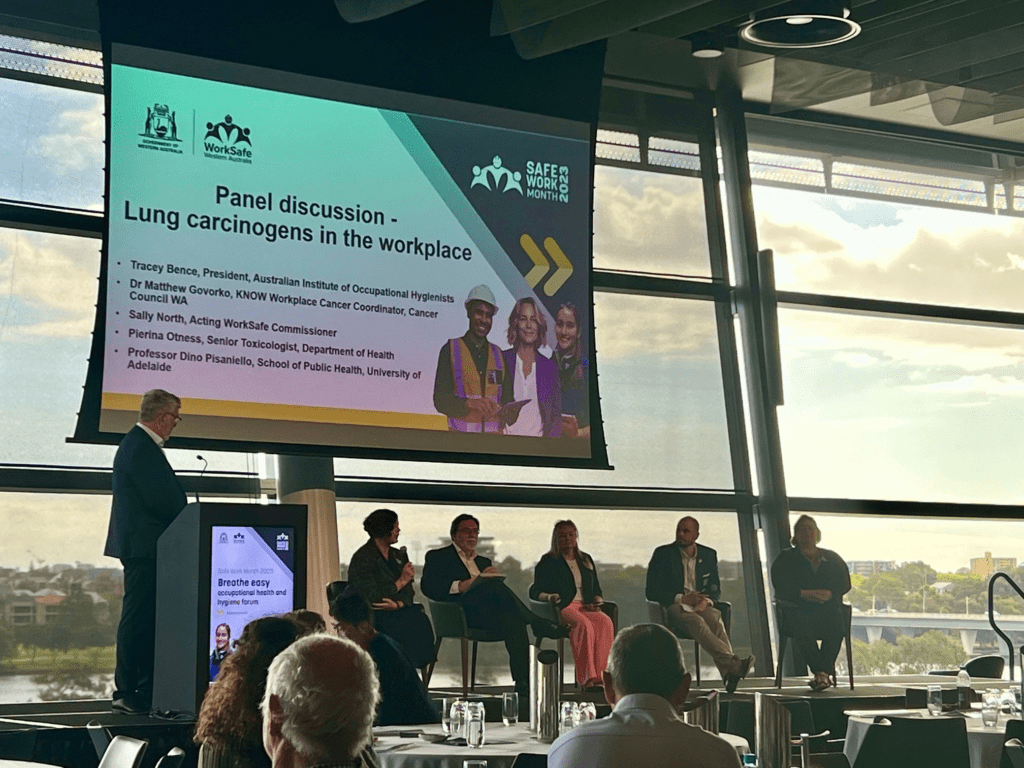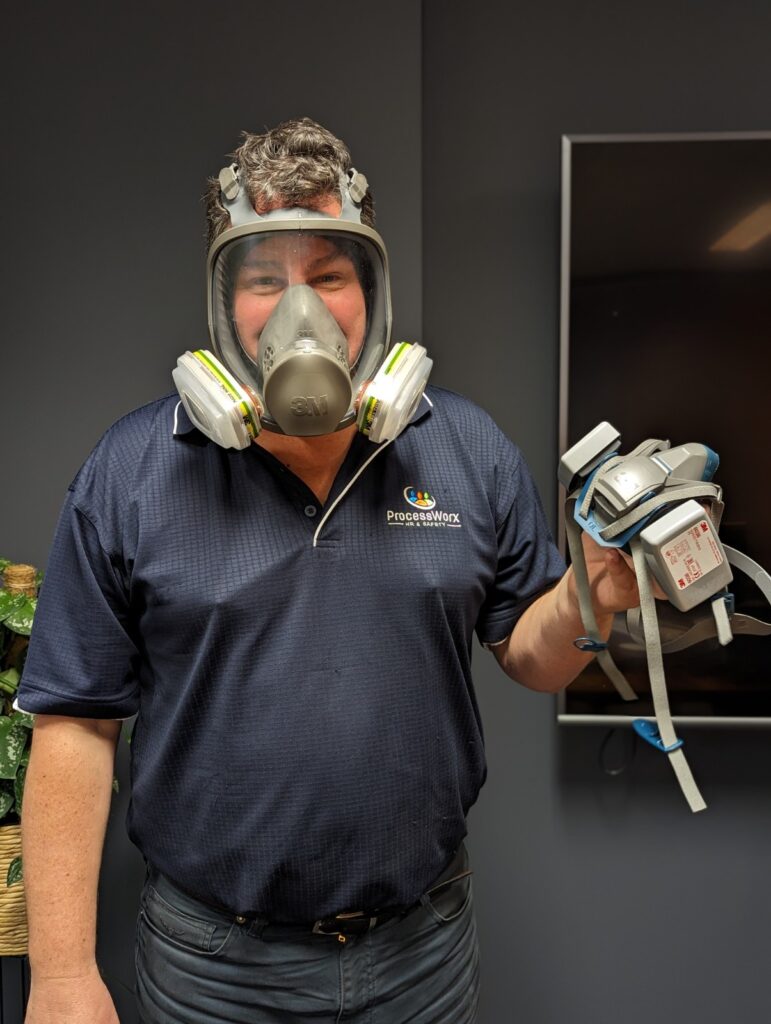Phil Gal
Senior WHS Advisor
ProcessWorx Senior WHS Consultant Phillip Gal attended the Breathe Easy – Occupational Health and Hygiene Forum earlier this month. The Breathe-Easy-Forum brought together various industry experts to discuss silica, asbestos, radiation and diesel exhaust emissions. Representatives, WHS Consultants, Occupational Hygienists, and Government and Educational providers were in attendance.
Professor Dino Pisaniello gave an enlightened speech on healthy buildings, otherwise known as “non-sick buildings”. The Professor raised the issues of air quality within buildings, the current practices used and the concerns they pose. Harmful contaminants like nuisance dust, volatile organic compounds, asbestos, viruses, bacteria, and possible external contaminants like vehicle exhaust gasses and bushfire smoke can compromise indoor air quality. Breathe-Easy-Forum
People working in sick buildings will likely experience a loss of productivity, increased absenteeism, and minor ill health such as sore throat, headaches, or potentially chronic health issues like allergies and cancer. Building owners and managers have a duty of care to provide a safe place of work. Professor Dino suggested a review of air handling systems to understand the hazards and controls. Also, building owners should consider improvements to ventilation, HEPA filters added to air handling systems, and, of course, removing or controlling known sources of contamination.
Dr Matthew Govorko from the Cancer Council WA presented the facts on diesel engine exhaust (DEE). Approximately 1.2 million Australians are exposed to DEE emissions at work. These emissions are linked to lung and possibly bladder cancer, and around one person every three days is diagnosed with a lung cancer caused by DEE emissions exposure at work. Results of an Australian study in 2015 on work exposure to DEE, found that workers in Western Australia had the highest rate of exposure across the country at 17%, with the agriculture industry recording 75.2% of the workforce having substantial exposure to DEE. Breathe-Easy-Forum
So, how can we reduce exposure to diesel engine exhaust emissions?
- We can start by eliminating small diesel engines that do not have effective exhaust control systems and replace them with other forms, such as battery electric motors.
- Ensure that machines are correctly serviced on time and are given ultra-low sulphur and other low-emission fuels.
- Improve the emission control devices by fitting particulate filters, catalytic converters, or scrubbers.
- Ensure operators work in positive pressure, air-conditioned cabs equipped with HEPA filters.
- Workers should also be trained on the hazards of DEE and how to protect themselves with correct work practices and using PPE devices.
Silica was also a hot topic of discussion. Silica dust is produced when silica-containing materials such as stone, brick and concrete are worked. Silica dust particles can be 100 times smaller than a grain of sand and easily find their way deep into our lungs. Tracy Bence, president of the Australian Institute of Occupational Hygienists, gave an in-depth overview of the issues for around 600,000 workers exposed to silica dust at work each year. The number of DIYers or homeowners exposed to silica dust each year is unknown. Exposure can be from mixing cement, cutting bricks or pavers, and cutting and working engineered stone benchtops. Breathe-Easy-Forum
Silica dust can be harmful if you breathe it in, and it can cause asthma, chronic obstructive pulmonary disease, silicosis and lung cancer. The workplace exposure standard (WES) for an 8-hour day is 0.1mg/m3. A review is underway, and it has been suggested the WES should be dropped to 0.05mg/m3. This means workplaces with any silica dust exposure must implement controls to eliminate or reduce exposure to below the WES. This includes air monitoring, medical examinations and other controls to limit the release of dust, such as wet cutting, exhaust ventilation systems and PPE. The best control is to not create dust in the first place, use low or non-silica-containing materials, and design and select products that don’t require cutting or finishing on the job site.
Silica, like asbestos in the past, is causing pain and suffering to many people. It is hoped with better understanding and controls in place, your workers will not have to suffer a similar fate. The same can be said for welding fumes and diesel exhaust emissions. The more we learn about these hazards, the more people we can keep safe from harm.
ProcessWorx is committed to assisting you in identifying hazards in your workplace and working with you to find practical solutions. Together we can make our workplaces safe.
If you would like to learn how ProcessWorx can help with Human Resources or Work Health & Safety, please contact us on 08 9316 9896, enquiries@processworx.com.au. Also watch an Introduction to ProcessWorx.
Follow ProcessWorx on LinkedIn, Facebook, Instagram, YouTube, and X to keep up with the latest HR and Safety news.







